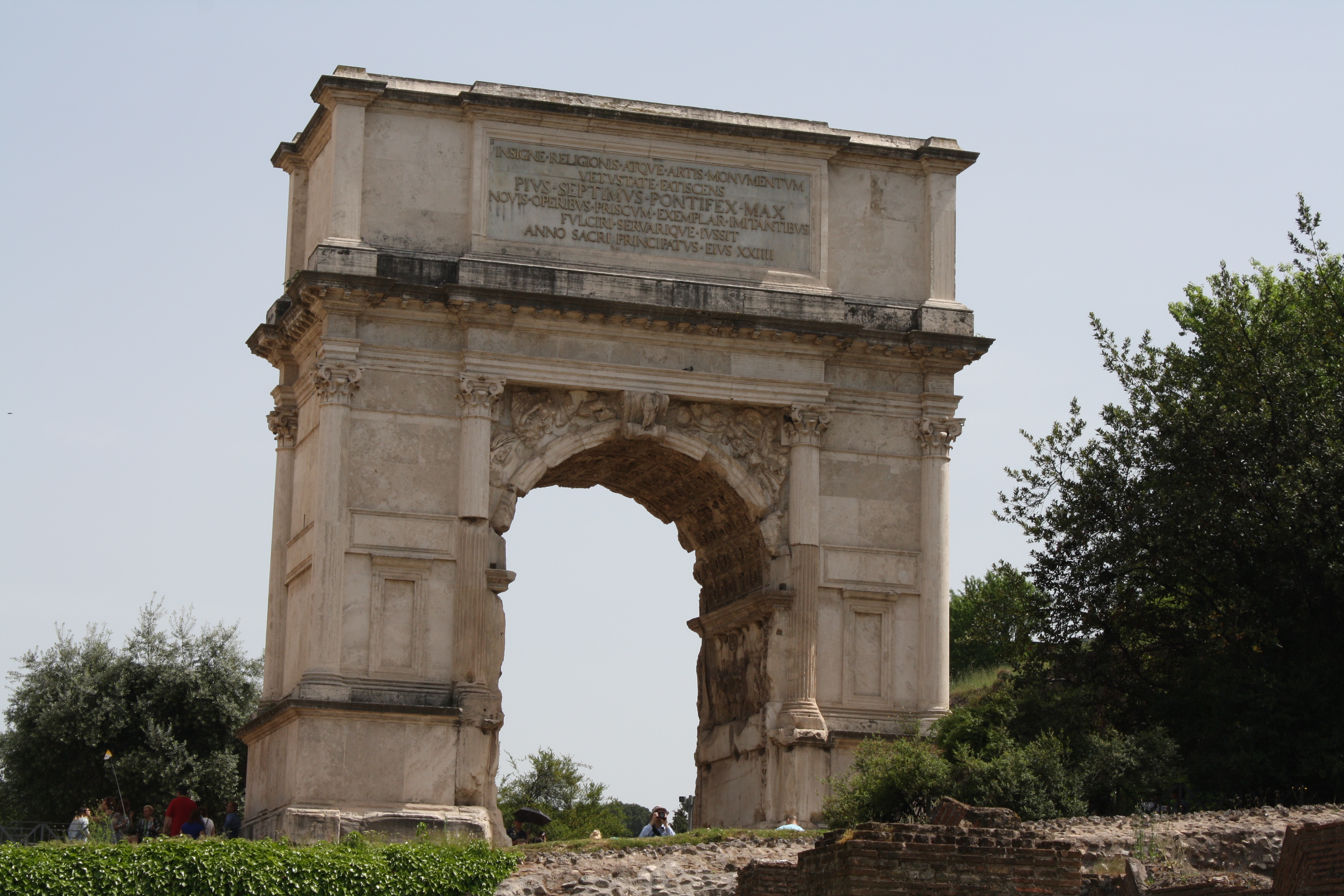A replica of one of ancient Rome’s most iconic sculptures brings ancient history and Jewish culture to life at Yeshiva University Museum this fall.

Spoils from the Temple of Solomon. Relief in the passageway of the Arch of Titus.

Attic inscription, Arch of Titus

The Arch of Titus – from Jerusalem to Rome, and Back
allows visitors to experience the richness and ongoing influence of one
of ancient Rome’s most significant monuments, as well as the ways its
meaning has dramatically transformed over 2,000 years. The
exhibition
will be on view in the Museum’s Popper Gallery, located at the Center
for Jewish History, 15 West 16th Street, through January 14, 2018.
The
exhibition explores the historical and cultural significance of the
Arch from its creation as a monument celebrating the Roman triumph over
the Jews
in 70 CE through the medieval papacy and early modern rabbis, the
Counter-Reformation, European Classicism and finally the Jewish and
Israeli national re-appropriation of the Arch.
“This
history, where a symbol of defeat transforms into a symbol of victory,
is especially relevant in light of the recent events in Charlottesville,
where symbols of a
dark history have galvanized people to assert the primacy of values that
are more inclusive and compassionate,” said Dr. Steven Fine, Churgin
Professor of Jewish History at Yeshiva University and director of the
Yeshiva
University Center for Israel Studies.
The Arch of Titus – from Jerusalem to Rome, and Back was
conceived and is presented by Yeshiva University Museum in partnership
with the Yeshiva University Center for Israel Studies. The Museum and
the Center will also co-present a special
international conference on the Arch on October 29, 2017.
Built
by Emperor Domitian around 82 CE to commemorate the Roman defeat of
Judaea in the Jewish War of 66-74 CE, the Arch of Titus has today become an iconic representation
of antiquity. The Arch
preserves sculptural reliefs that depict the sacred vessels of the
Jerusalem Temple being carried into Rome by celebrating Roman soldiers,
including
a seven-branched Menorah, which, since 1949, has been the emblem of the
State of Israel.
The exhibition features a digitally carved life-size replica of the Spoils of Jerusalem
relief from the interior passageway of the Arch. The replica is
projected with images that reconstruct the missing sculptures and colors
of the original relief, based on the original polychromy discovered
in 2012 by YU’s Arch of Titus Project, working collaboratively with a team of historians, scientists, and archaeologists.
In
complement to the cutting-edge visual technologies, the exhibition also
features rare artifacts from collections in Italy, Israel and the
United States that illuminate
the monument’s vibrant history – including:
Rare prints, paintings, photographs and depictions of the Arch of Titus across the centuries; 17th- and 18th-century placards carried by the Jews of Rome at the Arch during papal processions; A postcard written by Sigmund Freud from the Arch, in 1913, inscribed: “The Jew Survives it”; A selection of original proposals for the Emblem of the State of Israel.
The
exhibition stretches from the Roman era to the present, exploring the
image and symbolism of the Arch from various vantage points as the
monument transformed and was re-interpreted
across history.
As a complement to the exhibition, Yeshiva University Museum is teaming with the Jewish Museum of Rome and Centro Primo
Levi on The Rome Lab, an ambitious multimedia program that explores Rome's Jewish community through the centuries and today.
Spearheaded by Alessandra Di Castro,
director of the Jewish Museum of Rome, and Natalia Indrimi, director of
Centro Primo Levi, The Rome Lab is a dreamlike space that collapses
spatial and temporal coordinates around three symbolic physical places:
the Jewish
quarter, the Jewish Museum and the Synagogue. This historic partnership
with the Jewish Museum of Rome is especially meaningful in that it comes
directly after the conclusion of the exhibition on the Menorah held
jointly at
the Jewish Museum of Rome and the Vatican Museum.
No comments:
Post a Comment